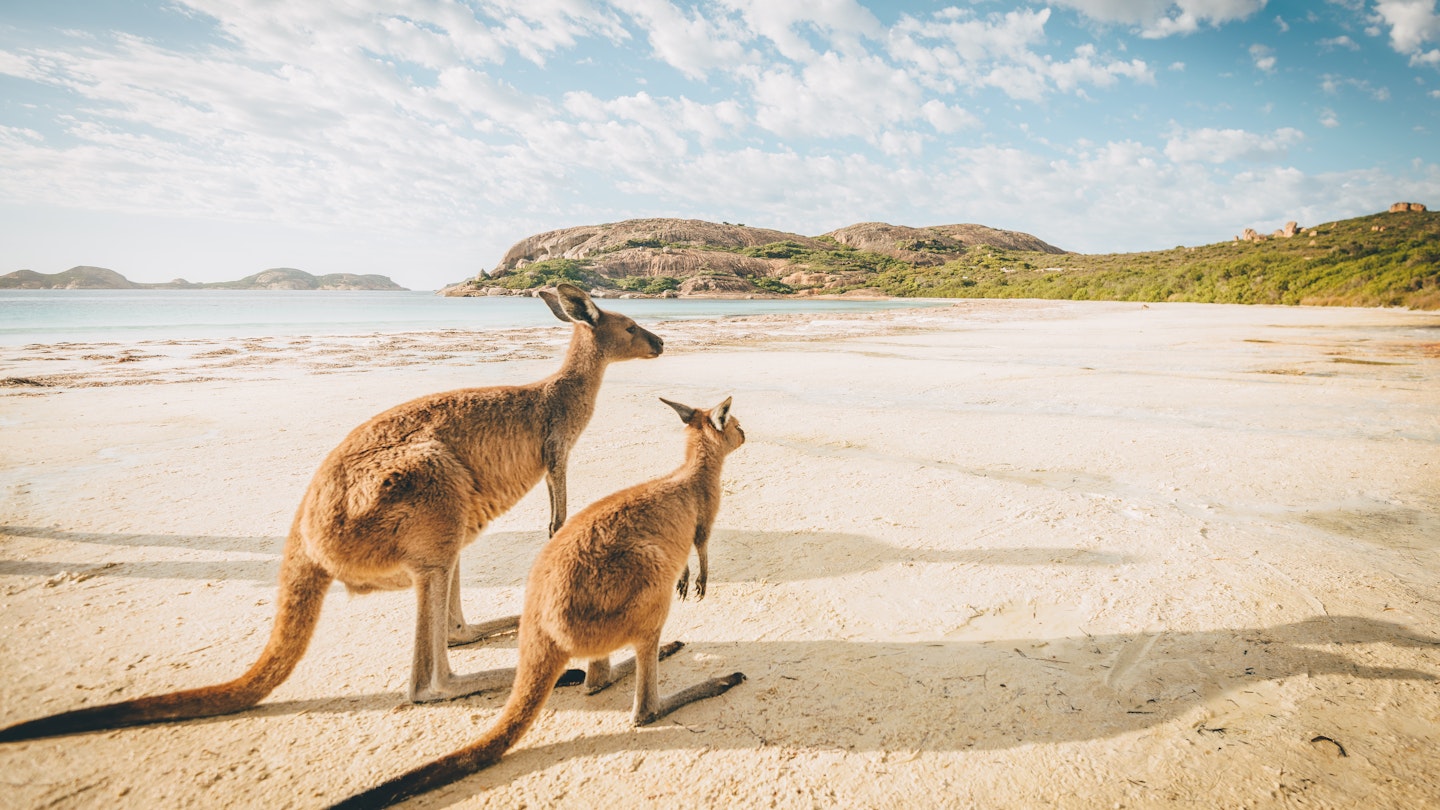Ultimate Guide to Wildlife Spotting in Australia
Australia’s wildlife is one of its most enticing features, found in the breathtaking landscapes across the nation. Despite popular misconceptions, it’s not just critters like deadly spiders and snakes—visitors can encounter a range of unique animals, from adorable marsupials to vibrant birds.
Australia offers numerous wildlife-spotting opportunities, influenced by the different regions you visit. Due to conservation challenges, some of the most iconic species are threatened, making responsible wildlife viewing and conservation efforts critical.
Where are the Best Places for Wildlife Watching in Australia?
Your chances of spotting Australia’s remarkable fauna are highest in its vast network of over 500 national parks.
Many of these national parks cater to international visitors, offering nearby accommodations and guided wildlife tours. Notable locations include:
- The Daintree (Queensland)
- Kakadu National Park (Northern Territory)
- Cape Range National Park (Western Australia)
- Blue Mountains (New South Wales)
- Grampians National Park (Victoria)
- Cradle Mountain-Lake St Clair National Park (Tasmania)
Rural accommodations often integrate into their natural surroundings, which means you might spot emus, echidnas, or wallabies wandering past your window. Even urban areas have wildlife opportunities; kangaroos roam Canberra, koalas inhabit Adelaide Hills, and unique quokkas can be found on Rottnest Island near Perth.
Where to Spot Australia’s Iconic Animals
Koalas
Koalas are emblematic of Australia’s unique fauna. These adorable marsupials spend up to 20 hours a day sleeping in eucalyptus trees. Observing koalas moving can be a rare treat, as they are usually seen resting peacefully. Due to habitat destruction, koalas are endangered in states such as New South Wales, the Australian Capital Territory, and Queensland.
Where to find them: Look for koalas in stands of trees along the Great Ocean Road (Victoria), Magnetic Island, Stradbroke Island/Minjerribah (Queensland), and Kangaroo Island (South Australia).
Tips for spotting them: Approach quietly, as koalas are sensitive to noise. Early mornings or evenings are the best times for sightings.
Kangaroos and Wallabies
While both kangaroos and wallabies belong to the macropod family, kangaroos are generally larger and more commonly seen roaming open grasslands. Wallabies are smaller, preferring forested areas.
Where to find them: Spot kangaroos on beaches like Lucky Bay in Cape Le Grand National Park (Western Australia) or even on suburban streets. Wallabies are often found in national parks such as Narawntapu National Park (Tasmania) and Cape Hillsborough National Park (Queensland).
Tips for spotting them: Dawn and dusk are optimal times to observe these animals. Move slowly and quietly to avoid startling them.
Wombats
Wombats might not be as famous as other creatures, but they are deeply cherished in Australia. These stout, nocturnal marsupials spend their days in burrows and are known for their distinctive cube-shaped droppings.
Where to find them: Look for wombats in the Bay of Fires, Cradle Mountain-Lake St Clair National Park, and Wilsons Promontory National Park.
Tips for spotting them: Like many marsupials, wombats are most active at dusk and dawn. If camping, you may catch a glimpse of them at night.
Echidnas
Echidnas are unique spiny anteaters that can be found throughout Australia’s forests and bushland. They are shy and typically curl into a ball when threatened.
Where to find them: Common in southern states, such as Victoria, NSW, South Australia, ACT, Tasmania, and southwestern WA.
Tips for spotting them: Look for them in the early morning or late afternoon. They move slowly, so be patient and observant.
Crocodiles
Australia is home to both saltwater and freshwater crocodiles, with saltwater crocs being significantly larger. They are typically found in northern Australia, and extreme caution is advised around their habitats.
Where to find them: Saltwater crocodiles can be found in the Adelaide River and Kakadu National Park, while freshwater varieties may be seen in Nitmiluk National Park.
Tips for spotting them: The dry season is the best time to see them. Be vigilant for telltale signs like slide marks on riverbanks.
Emus
These large flightless birds are common across mainland Australia, where they can be seen running swiftly in search of food and water. Their significance in Aboriginal culture is notable.
Where to find them: Emus are often spotted in Kosciuszko National Park (NSW) and various outback regions. They’re also present in city-based wildlife parks.
Tips for spotting them: Emus often gather near water sources and can be seen individually or in groups.
Tasmanian Devils
Sadly, Tasmanian devils face threats from disease, but conservation efforts are underway. They are known for their nocturnal activities and scavenging habits.
Where to find them: Look for Tasmanian devils in national parks like Cradle Mountain-Lake St Clair and in wildlife parks with nocturnal exhibits.
Tips for spotting them: Nighttime tours can improve your chances of seeing this charismatic marsupial in the wild.
Platypus
The platypus, a unique egg-laying mammals, boasts an unconventional appearance. Sightings require patience, but interactions with this elusive creature are rewarding.
Where to find them: The Atherton Tablelands and Eungella National Park are excellent spots for platypus sightings.
Tips for spotting them: Be still and quiet to avoid startling them; look for bubbles on the water’s surface indicating their presence.
Quokkas
Known for their friendly disposition and signature smiles, quokkas are vulnerable due to habitat loss.
Where to find them: Quokkas inhabit Wadjemup/Rottnest Island, accessible from Fremantle.
Tips for spotting them: Quokkas are more active during the day in winter; venturing away from tourist hotspots may lead to better encounters.
Consider Visiting a Wildlife Sanctuary
If you’re short on time, wildlife sanctuaries can offer guaranteed views of Australia’s unique animals. Many of these facilities prioritize animal welfare and contribute to education and conservation efforts.
By being mindful of wildlife viewing practices, visitors can have an unforgettable experience while ensuring these precious species are protected for future generations.





